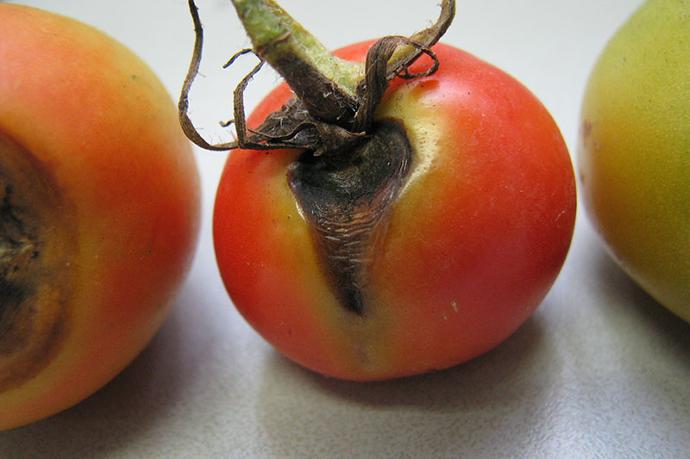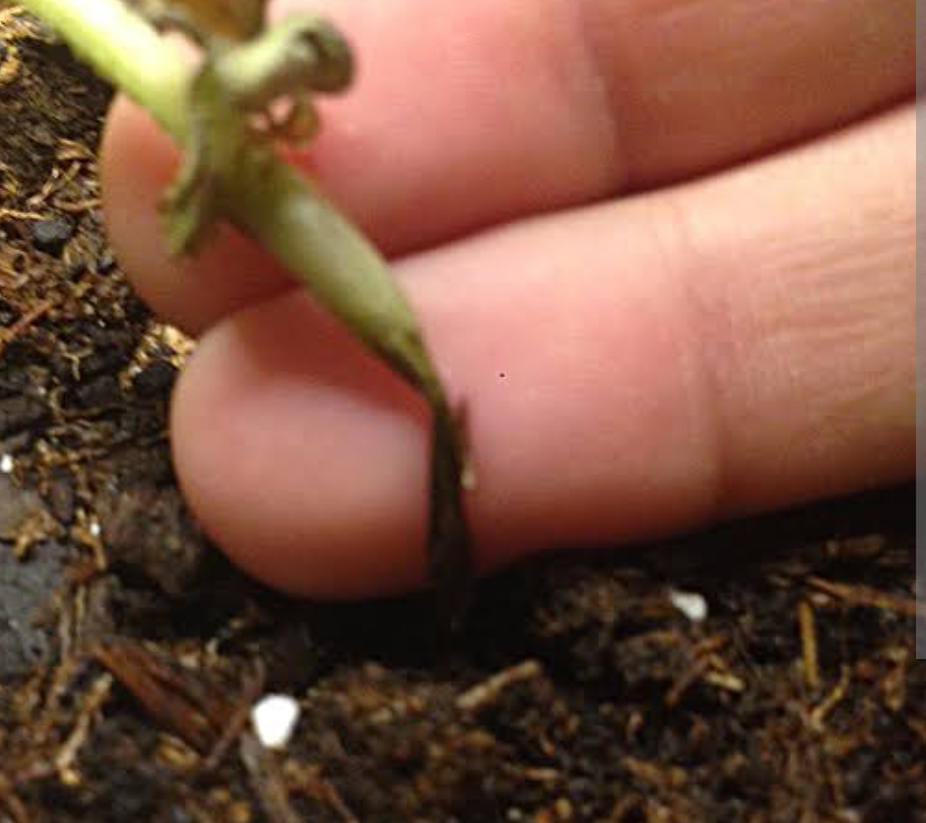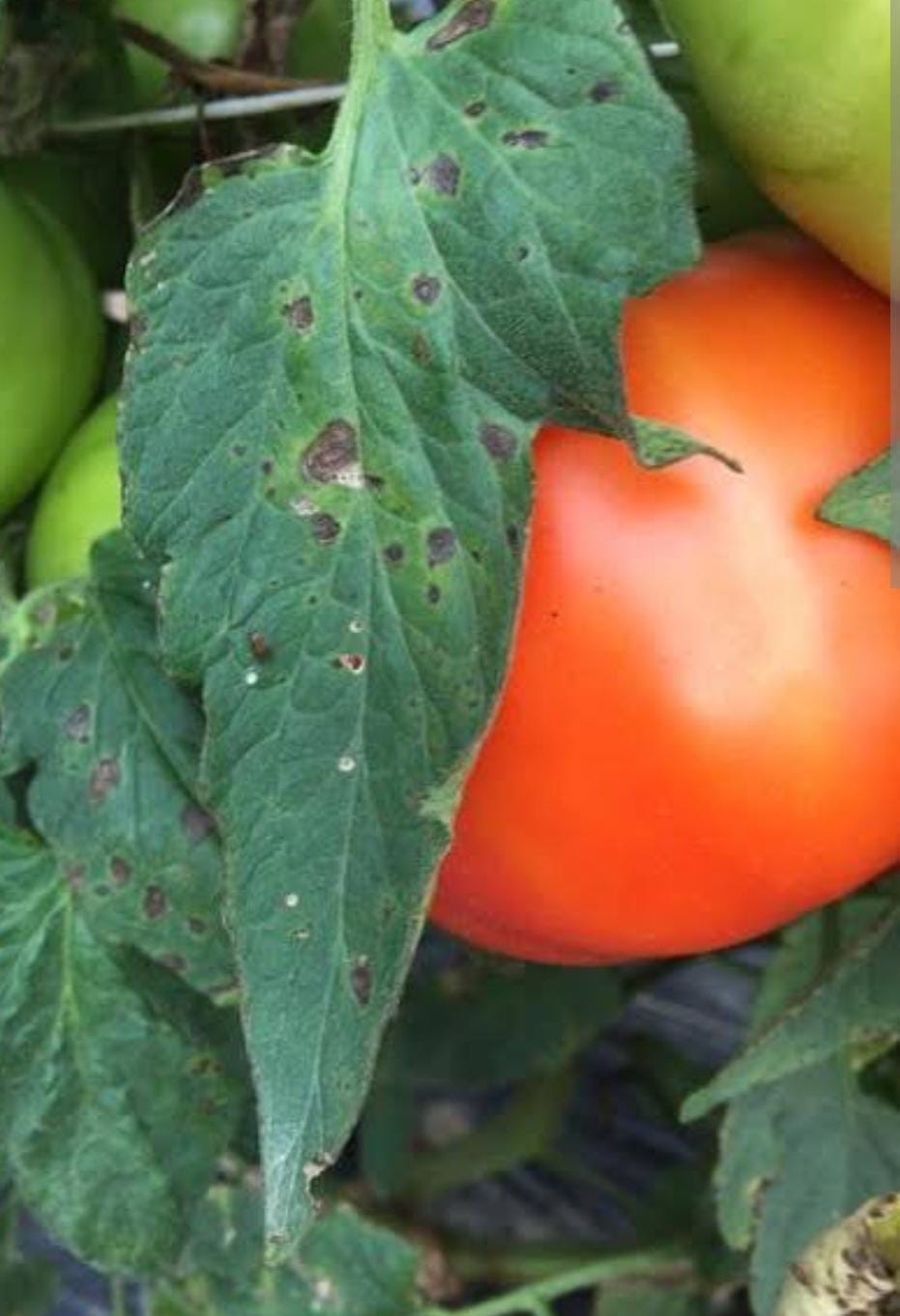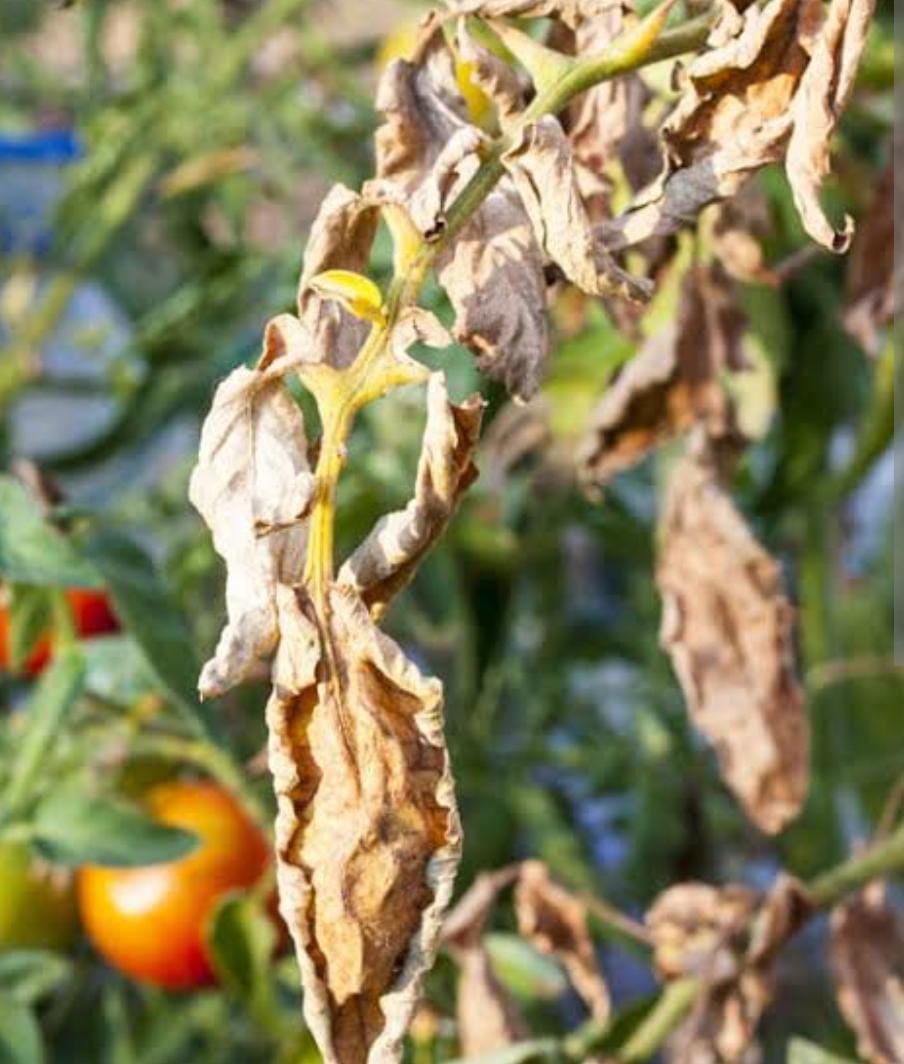Tomato Plant
Tomatoes are annuals with a height of 24-84 inches, sensitive to frost. They require indeterminate growth and well-drained, loamy soil in full sun. Keep the soil consistently moist. Edible but not medicinal.
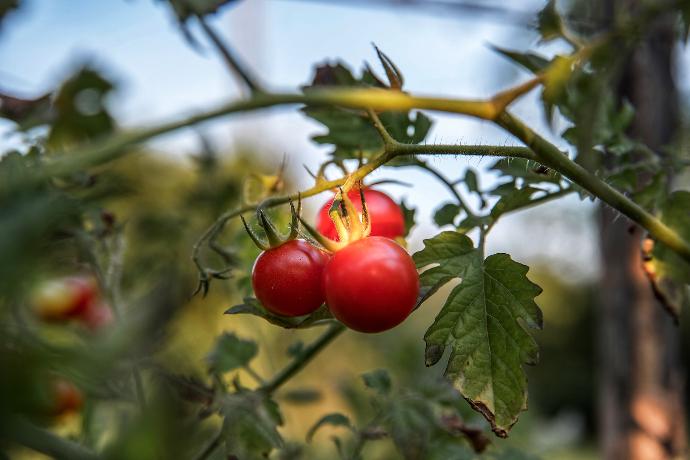
Habit
Annual
Height
0.5 to 1.5 m
Growth
Indeterminate
Soil
Well-drained, Loamy
Shade
Full Sun
Moisture
Moist
Edible
Yes
Medicinal
No
Origin
South America
Climatic Condition
Tropical, Subtropical
Temperature (°)
20°C to 30°C
Humidity (%)
60% to 80%
Potting media
50% Loam, 40% Sand, 10% Organic Matter
Fertilizers
Balanced Fertilizer
Watering
Regular watering
Plant Weight
2 to 3 kg
Flowering Time
Summer to Fall
Soil Ph level
6.0 to 7.5
Water Ph level
6.0 to 7.0
Soil EC
0.4 to 0.7 mS/cm
Yield Per Plant
20 to 40 kg per plant
NPK ratio
5:10:10
life Span
1 to 2 years
Health Benefits
High in Vitamin C, Antioxidant
Suggested Grow Media or Potting Mix ?
40% compost, 30% peat moss, 30% perlite
Suggested Fertigation/Fertilizers
Fertilize every 2 weeks with a balanced, water-soluble fertilizer.
Common Diseases and Remedies
Damping Off , Early Blight , Fusarium Wilt.
Complete Rotting Of Seedlings , Brown Concentric Rings , Younger Leaves will Die.
Use Raised Beds of 15cm heights ,Remove Crop Debris ,Pluck the Infected Plants.
Drench with Copper Oxychloride 50%WP@2.5g/liter,Mancozeb 35% SC@1kg/acre, Seed Treatment with Mancozeb@2g/1kg seeds.
HEALTH BENEFITS
1. Rich in antioxidants: Tomatoes contain antioxidants like lycopene, which can help protect against oxidative stress and inflammation.
2. May help reduce cancer risk: The antioxidants and other compounds in tomatoes may help reduce the risk of certain cancers.
3. May help improve heart health: Tomatoes' antioxidants and potassium content may help lower blood pressure and improve cardiovascular health.
What is Tamato plant?
The tomato plant, scientifically known as Solanum lycopersicum, is a flowering plant belonging to the Solanum family (Solanaceae). It is widely cultivated as an edible fruit and used in a variety of cuisines around the world. Tomato plants typically have a spreading, vine-like trunk that can reach several meters in length, although there are more compact varieties.
What types of tamato are there?
There are many different types of tomatoes, each with its own characteristics and uses. Common varieties include:
1. *Tomato Slices:*
These are large, round tomatoes that are commonly used to slice and eat raw in salads and sandwiches. They come in a variety of colors, including red, pink, yellow, and orange.
2. *Cherry tomatoes:*
Small, bite-sized tomatoes that are usually sweet and juicy. It is often used in salads and snacks.
3. *Grape Tomato:*
Grape tomatoes are small and elongated, similar to cherry tomatoes. They are often sweeter and firmer than cherry tomatoes, making them ideal for snacking or roasting.
4. *Roma Tomato:*
Roma tomatoes, also known as plum tomatoes, are oval in shape and have fewer seeds and thicker flesh than sliced tomatoes. It is often used in the production of sauces and canned goods.
5. *Heirloom Tomato:*
A tomato variety that has been passed down through generations for its unique taste, color, and shape. There are many different types, each with unique characteristics.
How To Care For Tomato
Location
Tomato plants grow in areas that receive plenty of sunlight. Ideally, a location that receives at least 6 to 8 hours of direct sunlight per day. It also requires well-drained soil that is rich in organic matter and has a pH of 6.0 to 7.0.
Sunlight
Tomato plants need lots of sunlight to grow. Ideally, they should receive at least 6 to 8 hours of direct sunlight per day. However, it tolerates partial shade, especially in hot climates, where afternoon shade helps protect it from the intense heat.
Soil
Tomato plants grow in well-drained, nutrient-rich soil. Loamy soils with a pH of 6.0 to 7.0 are ideal for growing tomatoes.
Hydration
Tomato plants require consistent watering to thrive, especially during the growing season when fruit production is active. The key is to keep the soil evenly moist but not soggy. Irregular watering can cause problems such as end rot and fruit bursting.
Nourishment
Tomato plants require several important nutrients to grow and produce healthy fruit. These include:
1. *Nitrogen (N):* Nitrogen is essential for leaf growth and overall plant development. However, too much nitrogen can cause excessive leaf growth and affect fruit production.
2. *Phosphorus (P):* Phosphorus is important for root development, flowering, and fruiting. This is especially important during the early stages of growth.
3. *Potassium (K):* Potassium is essential for overall plant health, disease resistance, and fruit quality. It helps regulate water absorption and nutrient transport within plants.
Issues
Tomato plants are susceptible to a variety of problems, including pests, diseases, and environmental stressors. Some of the most common issues to be aware of include:
1. *Pests:* Common pests that affect tomato plants include aphids, whiteflies, tomato hornworms, and spider mites. These pests can damage leaves, flowers, and fruit, reducing plant health and yield.
2. *Diseases:* Tomato plants are susceptible to fungal, bacterial, and viral diseases. The most common diseases include early late blight, late blight, bacterial spot, and tomato mosaic virus. These diseases can cause leaf spots, fruit rot, and overall plant decline.
What are the benefits of tomato plants?
Tomato plants offer several benefits both in the garden and in nutrition:
1. *Nutritional Value:* Tomatoes are rich in antioxidants such as vitamins C and K, potassium, and lycopene, which may reduce the risk of chronic diseases.
2. *Culinary Versatility:* Tomatoes are versatile ingredients used in a variety of dishes, including salads, sauces, soups, and sandwiches.
3. *Garden Productivity:* Tomato plants are prolific, producing high yields of fruit in a relatively short growing season
4. *Easy to grow:* With proper care, tomato plants are relatively easy to grow, making them suitable for gardeners of all experience levels.
5. *Attracts pollinators:* Tomato flowers attract pollinators such as bees and butterflies, which can benefit other plants in your garden.
6. *Aesthetic Appeal:* Tomato plants add beauty to your garden and add visual interest to your outdoor space with their bright green leaves and colorful fruits.
Frequently asked questions about growing tamato
How to care for tamato
1. *Watering:* Keep the soil evenly moist but not wet. Water thoroughly once or twice a week, depending on weather conditions. Keep the leaves dry to prevent disease.
2. *Fertilizer:* Use a balanced fertilizer or a fertilizer made specifically for tomatoes. Follow the directions on the package, usually at planting and then periodically throughout the growing season.
3. *Pruning:* Remove shoots (small buds that grow in the crotch between the trunk and branches) to improve air circulation and encourage fruit production. You can also prune to remove diseased or damaged branches.
4. *Support:* Helps tomato plants stay upright as they grow. This can be done using stakes, cages, or trellises.
5. *Mulching:* Apply a layer of mulch around tomato plants to help retain soil moisture, regulate temperature, and suppress weeds.
6. *Pest and Disease Control:* Monitor your plants regularly for signs of pests or diseases, and take appropriate action if you notice any issues. This may include using organic or chemical controls as necessary.
7. *Harvesting:* Harvest fully ripe tomatoes to encourage further fruit production. Remove overripe or damaged fruit to prevent the spread of disease.
What is the purpose of the tomato plant?
1. *Raw consumption:* Tomatoes are usually sliced raw and added to salads and sandwiches, or eaten whole as a snack.
2. *Cooking:* Tomatoes are a versatile ingredient used in a wide range of dishes, including sauces, soups, stews, curries, and pasta dishes.
3. *Canning and Preserving:* Tomatoes can be canned or preserved as sauces, salsas, chutneys, or jams for long-term storage and use.
4. *Make Juice:* You can make tomato juice by squeezing tomatoes. It is often consumed on its own or as a base for cocktails such as Bloody Marys.
5. *Drying:* You can make sun-dried tomatoes by drying tomatoes. It has a concentrated flavor and is used in salads, pasta dishes, and pizza toppings.
6. *Medicinal Uses:* Tomatoes are rich in vitamins, minerals, and antioxidants and are said to have many health benefits, including: B. Reduces the risk of heart disease and cancer.
7. *Ornamental Tomatoes:* Some varieties of tomatoes are grown as ornamentals, where their colorful fruits add visual interest to gardens and landscapes.
Can I grow tomato plants indoors?
1. *Light:* Tomato plants need lots of sunlight. Therefore, place it in a place where it receives direct sunlight for at least 6-8 hours every day. If you don't have enough natural light, consider using grow lights as an aid.
2. *Temperature:* Tomatoes prefer warm temperatures. Daytime temperatures are ideal between 18 and 29 °C, but nights are slightly cooler. Do not place it near a window or door that is prone to drafts.
3. *Container:* Choose a large container with drainage holes to allow excess water to escape. A 5-gallon container is a good size for a single tomato plant.
4. *Soil:* Use a well-draining potting mix that is rich in organic matter. Avoid using garden soil, as it may compact in containers.
5. *Watering:* Keep the soil evenly moist but not soggy. Water when the top inch of soil feels dry.
6. *Support:* Tomato plants need support as they grow. You can use stakes, cages, or trellises to support the plant and keep it upright.
7. *Fertilizer:* Use a balanced fertilizer or a fertilizer made specifically for tomatoes. Please follow the instructions on the package for usage.
8. *Pollination:* Tomato plants are self-pollinating, but you can aid the pollination process by gently shaking the plant or using a small brush to transfer pollen between the flowers.
Which pot is best to grow a tomato plant in?
When growing a tomato plant, make sure it has enough space for the roots to grow and enough space to support the plant's growth. Please make sure it is stable. Here are some factors to consider when choosing a pot for growing tomatoes.
1. *Size:* Choose a pot that is at least 5 gallons in size and at least 12 to 18 inches in diameter. As your tomato variety grows larger, you may need a larger pot.
2. *Materials:* Terracotta, ceramic, plastic, and fabric pots are all suitable for growing tomatoes. Each material has its own advantages and disadvantages in terms of weight, insulation, moisture retention, etc.
3. *Drainage:* Make sure there are drainage holes in the bottom of the pot to avoid water blockages that can cause root rot. Raising the pot slightly above the ground will make drainage easier.
4. *Weight:* Consider the weight of the pot, especially if you plan on moving it often. Plastic pots are lighter than ceramic or terracotta pots.
5. *Depth:* Tomatoes have deep root systems. Therefore, choose a pot deep enough to accommodate the roots. We recommend a minimum depth of 12 to 18 inches.
6. *Stability:* Tomato plants can get tall and heavy, so choose a pot that is sturdy and won't topple over easily. As your plants grow, you may need to provide additional support, such as: B. Post or cage.
Where can I buy tomatoes?
Tomato seedlings can be purchased from a variety of places, including:
1. *Garden centers/nurseries:* Local garden centers and nurseries often carry a variety of tomato plants, including different varieties and sizes.
2. *Hardware Stores:* Stores like Home Depot, Lowe's, and Walmart may have tomato plants available for purchase, especially during gardening season.
3. *Farmers Markets:* Some farmers markets sell tomato plants along with other produce and products.
4. *Online Retailers:* Online retailers such as seed companies and gardening websites also sell tomato plants.
5. *Local Farms:* Some local farms, especially those that offer produce they harvest themselves, may sell tomato plants directly to consumers.
